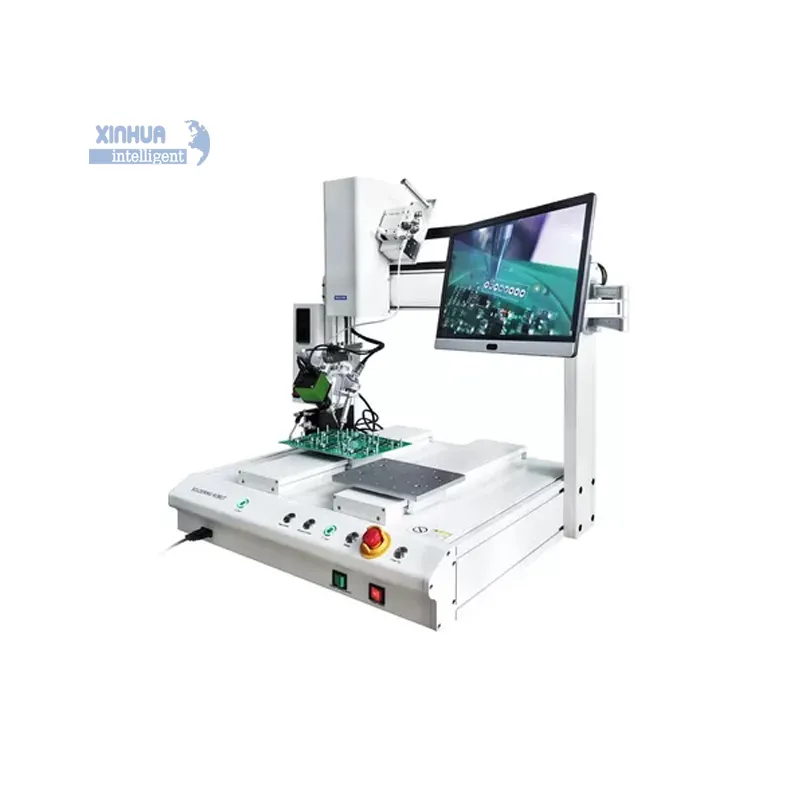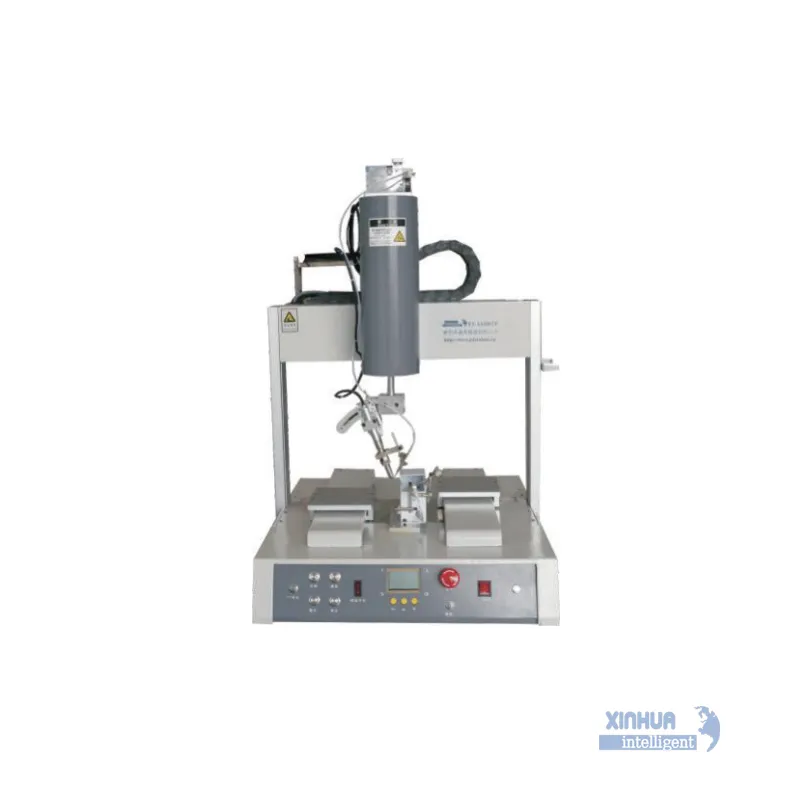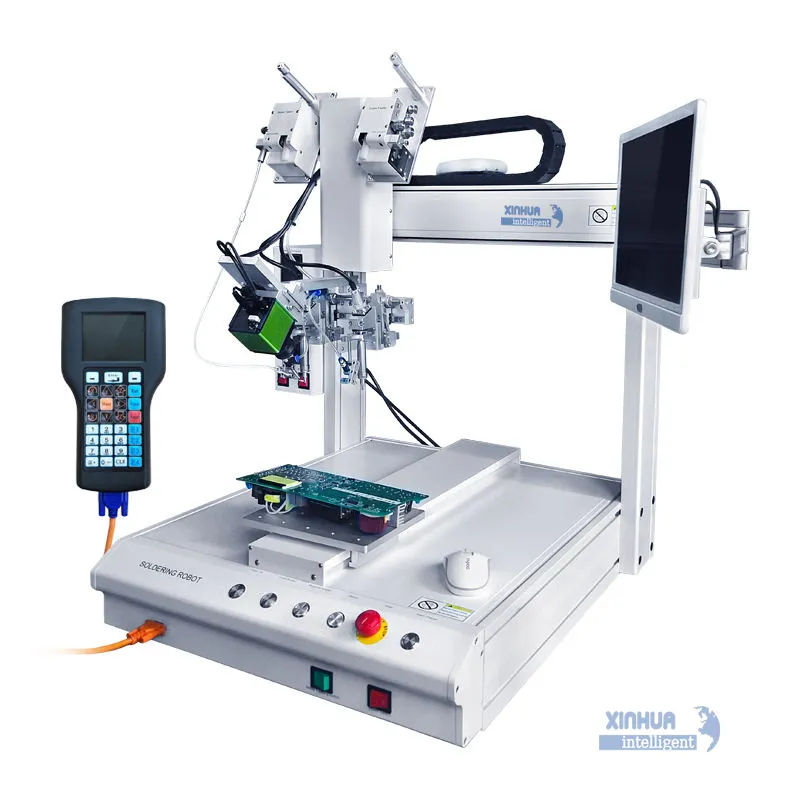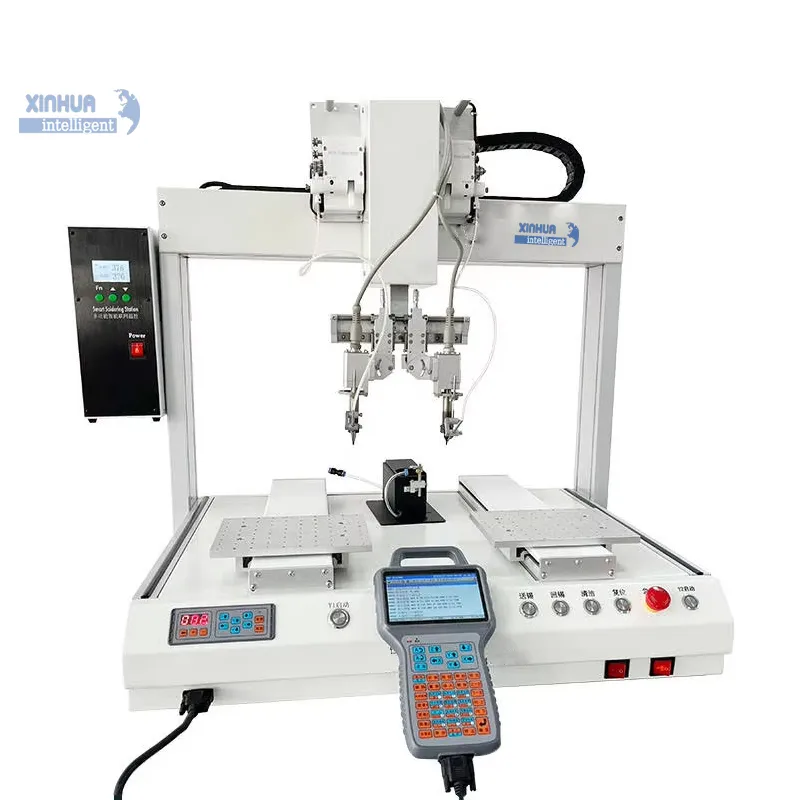A PCB soldering robot is an automated machine designed to solder electronic components onto a printed circuit board (PCB) with high precision, consistency, and efficiency. It replaces or supplements manual soldering in electronics assembly, especially for complex, high-volume, or high-reliability products.
🔹 What It Is
- Definition: A robotic soldering system that uses programmable motion control and soldering tools (such as soldering irons, laser soldering heads, or selective soldering nozzles) to perform repeatable soldering tasks.
- Applications: Consumer electronics, automotive electronics, medical devices, aerospace, telecommunications, and industrial equipment.
🔹 How It Works
A PCB soldering robot typically works through these steps:
-
PCB Positioning
- The PCB is placed on a fixture or conveyor under the robot’s working area.
- Vision systems or fiducial markers ensure accurate alignment.
-
Programmed Path & Motion Control
- The robot follows a pre-programmed soldering path (XYZ or multi-axis motion).
- CAD or Gerber files may be imported to automate solder point recognition.
-
Soldering Process
Different soldering methods are used:
- Iron-tip soldering robot: Uses a heated soldering iron and feeds solder wire to each joint.
- Laser soldering robot: Uses a laser beam to precisely heat solder paste or wire.
- Selective soldering robot: Uses a mini wave of molten solder to touch specific joints.
-
Flux Application (if needed)
- The system dispenses flux before soldering to improve wetting and joint quality.
-
Solder Feeding
- Solder wire or paste is automatically dispensed in the right quantity.
-
Heating & Bonding
- The soldering tool applies controlled heat to melt the solder, bonding the component lead/pad to the PCB copper pad.
-
Cooling & Solidification
- The solder joint cools and solidifies, creating a strong electrical and mechanical connection.
🔹 Key Features
- Automation: Reduces human labor and improves consistency.
- High Precision: Repeatable positioning down to fractions of a millimeter.
- Programmable Flexibility: Can handle different PCB layouts and components.
- Vision System (optional): Detects misaligned components or verifies solder quality.
- Temperature & Process Control: Ensures reliable solder joints.

✅ In summary:
A PCB soldering robot is an automated system that replaces manual soldering by using robotic arms, programmed
soldering paths, and controlled heating to create consistent, high-quality solder joints on printed circuit boards.



